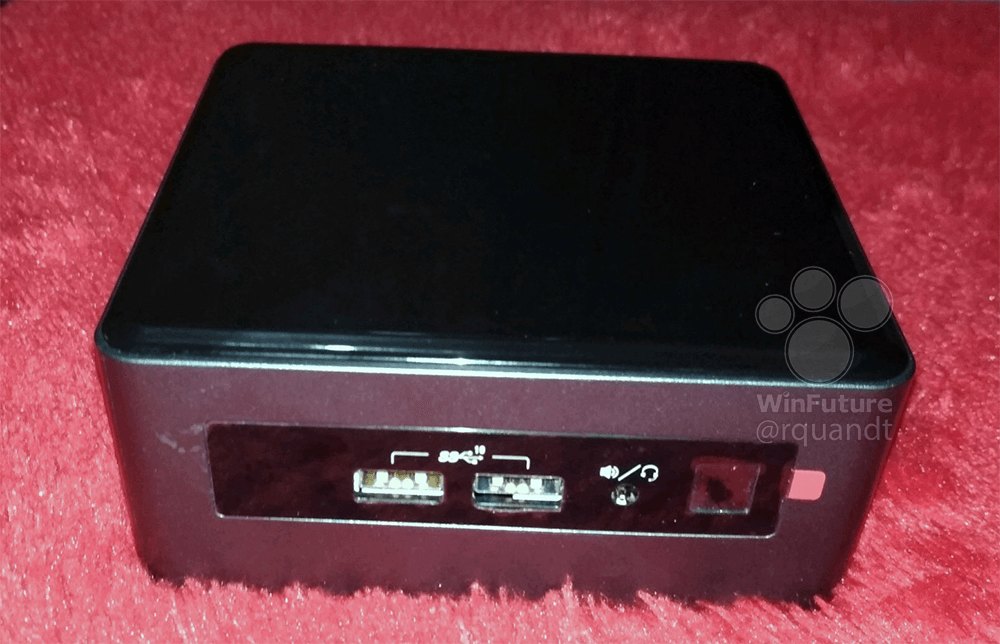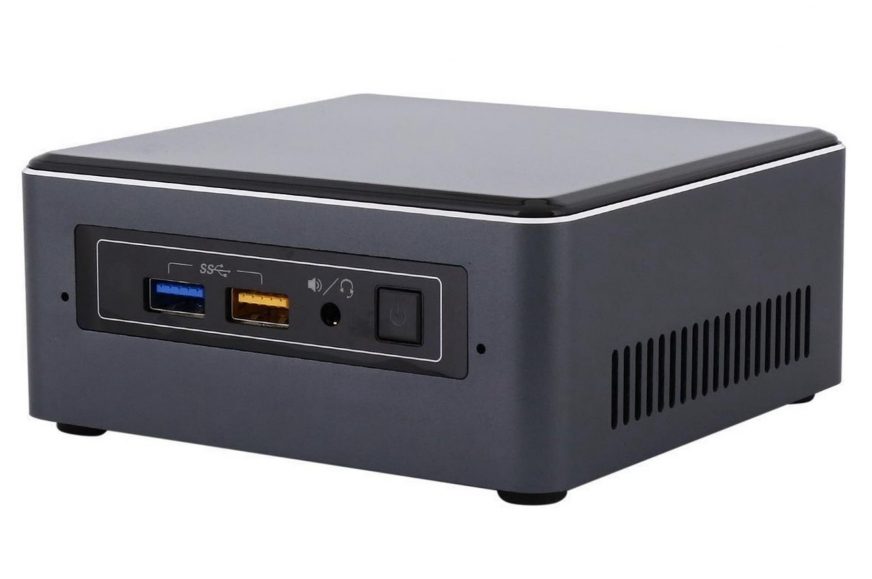Cannon Lake and dedicated graphics cards
Minicomputers and NUC barebones from Intel is nothing new. But this year, there will be an interesting innovation: a model with dedicated graphics card. Not in the style of high-end Hades Canyon (Kaby Lake-G with Vega GPU) of course. It’s going to be NUC with a cheaper Radeon in some classic chassis, and the price will be lower. This model will probably be one of the first computers with 10nm Intel processors – which may be related.
If you’re interested in the world of processors, you probably already know that Intel is taking its time with 10nm models (Cannon Lake). Last year, it was just refreshed Kaby Lake architecture, followed by Coffee Lake, and both are 14nm production. There’s no official release date even for this year, but there should be the first model, Core i3-8121U (dual-core and with HT, 15 W), in new NUC computers. The base clock will be 2.2 GHz and 3.2 GHz with turbo. The code name is “Crimson Canyon” (NUC8I3CYSM2 and NUC8I3CYSM3 models).
In addition to the fact that Core i3-8121U is the first 10nm processor (and the Cannon Lake architecture is supposed to have AVX-512 instructions, among others), these models will be specific also because of separate graphics cards. According to specifications, there should be some Radeon 500 (perhaps Radeon RX 550, maybe something weaker), equipped with 2GB of GDDR5 memory. It will be probably powered directly by the NUC motherboard since there is not much space inside the chassis. In the photos on the WinFuture website, the case is not bigger than a usual NUC.

The final product could be relatively good at performing in games due to its dedicated graphics card, but it will also affect power consumption and noise levels. The power supply (according to WinFuture) is ready for 90 W, casual NUC have 65 W. The cooler will have to be more capable, but there’s still a chance that this board format will make passive cases manufacturers interested.

It is quite remarkable how this unusual configuration came to be. It is possible that Intel didn’t intend to create a mini gaming PC, they could have gone for the more powerful Kaby Lake Refresh quad-core processors in combination with a more visually appealing chassis. According to some backstage reports, the first batch of Cannon Lake processors (with a long delay) did not have functional iGPUs, Intel for some reason turned them off, and these chips were just simple dual-core CPUs. Now it looks like Intel have decided to use them in mini PC NUC, since they can hardly be used without GPU in notebooks (which was their original purpose). Radeon would be a necessity first and an advantage second. However, it remains to be seen if the promo of Crimson Canyon will be based on a dedicated GPU.
Not all Cannon Lake processors lack integrated graphics, so we‘re not entirely sure whether is Core i3-8121U also affected. Theoretically, Intel could add GPUs to increase the number of video outputs, there could be 6, for example, with Radeon included. Either way, this NUC will be unique in its own way. Let’s hope it will not be some limited edition just because Intel need to get rid of Cannon Lake without iGPU.











